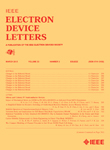
IEEE ELECTRON DEVICE LETTERS
metrics 2024
Transforming Ideas into Electronic Advancements
Introduction
IEEE Electronics Device Letters, published by the esteemed IEEE-Institute of Electrical and Electronics Engineers Inc, stands at the forefront of innovation in the field of electrical and electronic engineering. With a rich history spanning from 1980 to 2024, this journal showcases groundbreaking research and letters that significantly contribute to the advancement of electronic, optical, and magnetic materials. Its impressive Q1 rankings in both Electrical and Electronic Engineering and Electronic, Optical, and Magnetic Materials underscore its pivotal role in shaping contemporary academic discourse. The journal maintains a strong position in Scopus rankings, positioned within the top 16% for Electrical and Electronic Engineering and the top 18% for Materials Science, making it a vital resource for researchers, professionals, and students alike. With the absence of open access, it maintains an exclusive repository of high-impact research that experts in the field turn to for the latest insights and developments. IEEE Electronics Device Letters is committed to providing a platform for the dissemination of transformative knowledge that fuels innovation and progress in the ever-evolving landscape of electronics.
Metrics 2024
 1.25
1.25 4.10
4.10 4.20
4.20 171
171Metrics History
Rank 2024
Scopus
IF (Web Of Science)
JCI (Web Of Science)
Quartile History
Similar Journals
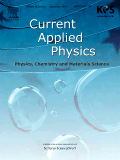
CURRENT APPLIED PHYSICS
Fostering Interdisciplinary Insights in Physical Sciences.Current Applied Physics is a leading journal published by Elsevier, specializing in the dynamic fields of Physics and Materials Science. With an ISSN of 1567-1739 and an E-ISSN of 1878-1675, this journal focuses on the latest advancements and applications of physics principles in various practical domains. Operating from the innovative hub of Amsterdam, Netherlands, Current Applied Physics occupies a significant niche in the scientific community, evidenced by its Q2 ranking in both the Physics and Astronomy and Materials Science categories for the year 2023, along with impressive Scopus rankings that highlight its relevance in the fields of General Physics and General Materials Science. The journal's scope encompasses a wide range of topics, fostering interdisciplinary collaboration and facilitating the exchange of knowledge among researchers, professionals, and students. Each issue features peer-reviewed articles that contribute to the understanding and application of physical sciences, making it an essential resource for those aiming to stay at the forefront of research and innovation in applied physics.
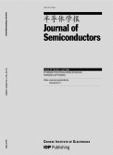
Journal of Semiconductors
Connecting researchers to the pulse of semiconductor technology.Journal of Semiconductors, published by IOP Publishing Ltd in the United Kingdom, is a leading scholarly journal that has established itself as a premier platform for disseminating high-quality research in the fields of condensed matter physics, electrical and electronic engineering, and materials chemistry. Since its inception in 2009, the journal has featured research articles that delve into the fundamental and applied aspects of semiconductor technologies, making significant contributions to advancements in electronic, optical, and magnetic materials. The journal boasts an impressive Q1 ranking in several categories, including Condensed Matter Physics and Electronic, Optical and Magnetic Materials, reflecting its influential role in shaping contemporary research. With a dedicated audience of researchers, professionals, and students, it aims to foster collaboration and innovation in this dynamic field. Although it operates under a traditional access model, the journal offers various publication options that ensure the visibility and impact of its articles. Through its rigorous peer-review process and commitment to excellence, the Journal of Semiconductors continues to be an invaluable resource for those seeking to stay at the forefront of semiconductor research and technology.
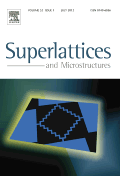
SUPERLATTICES AND MICROSTRUCTURES
Transforming ideas into impactful research outcomes.SUPERLATTICES AND MICROSTRUCTURES is a premier journal dedicated to the exploration and dissemination of cutting-edge research in the fields of Condensed Matter Physics, Electrical and Electronic Engineering, and Materials Science. Published by Academic Press Ltd - Elsevier Science Ltd, this journal has established itself as an important platform for scholars and industry professionals to share their findings related to the design, fabrication, and application of superlattices and microstructured materials. With a commendable impact factor reflected in its rankings—positioned within the top quartile in Physics and Astronomy as well as Electrical and Electronic Engineering—it offers high visibility and influence in the academic community. The journal has covered significant contributions from 1985 to 2022, although access options have transitioned, making staying current essential for researchers and practitioners alike. This journal not only serves as a repository of knowledge but also fosters collaboration and innovation in materials science and related disciplines.

MICROWAVE JOURNAL
Navigating the Complexities of Microwave TechnologyMicrowave Journal, published by Horizon House Publications Inc, is a well-established platform in the field of Electrical and Electronic Engineering, specifically focusing on the advancements and applications of microwave technology. Since its inception in 1969, the journal has consistently delivered high-quality research, making it an invaluable resource for professionals, researchers, and students alike. Despite its Q4 ranking in Scopus for 2023, the journal plays a crucial role in disseminating knowledge and fostering innovation within its niche, showcasing developments across various areas including microwave systems, components, and applications. Although it does not offer Open Access, the journal’s comprehensive insights and peer-reviewed articles are essential for anyone looking to deepen their understanding of microwave engineering. By maintaining a rigorous editorial standard, Microwave Journal continues to shape the discussion and evolution of microwave technology.
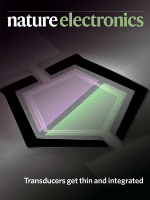
Nature Electronics
Unveiling the Next Generation of ElectronicsNature Electronics is a premier journal in the field of Electrical and Electronic Engineering, published by NATURE PORTFOLIO. Established in 2018 and converging until 2024, it has swiftly positioned itself as a leading platform for groundbreaking research, holding a prestigious Q1 ranking in multiple categories including Electronic, Optical and Magnetic Materials, and Instrumentation according to the latest 2023 evaluations. The journal boasts an impressive Scopus ranking, securing the top position in Instrumentation and showcasing exceptional standings in both Electrical Engineering and Materials Science. With a commitment to disseminating high-quality research, Nature Electronics offers insightful access to the latest innovations and advancements in the electronics domain, making it an essential resource for researchers, professionals, and students alike. Engaging with this journal enables readers to stay at the forefront of technological progress and fosters discussion on the future of electronic materials and devices.

Transactions on Electrical and Electronic Materials
Illuminating the Future of Electronic and Optical MaterialsTransactions on Electrical and Electronic Materials, published by Springer, is a distinguished journal aimed at advancing the fields of electrical and electronic engineering, as well as electronic, optical, and magnetic materials. With an ISSN of 1229-7607 and an E-ISSN of 2092-7592, this journal is vital in disseminating impactful research and innovations, providing insights and significant findings that cater to both academia and industry. Holding a Q3 ranking in the categories of Electrical and Electronic Engineering and Electronic, Optical and Magnetic Materials, it serves as a reputable platform for sharing research that influences ongoing developments in these critical areas. The journal's converged years from 2011 to 2024 signify its commitment to providing a comprehensive review of technological advancements. Located in New York City, it appeals to a global audience of researchers, professionals, and students, enhancing their understanding of current trends and practices within the domain.
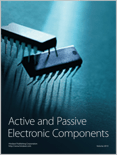
Active and Passive Electronic Components
Fostering Collaboration in Electronic Component ScienceActive and Passive Electronic Components, published by HINDAWI LTD, stands as a significant open-access journal dedicated to the fields of electrical and electronic engineering, as well as materials science, particularly focusing on electronic, optical, and magnetic materials. Established in 1985, this journal aims to disseminate high-quality research, experimental studies, and theoretical analyses that contribute to advancements in electronic component technology and applications. Despite its recent category quartile rankings of Q4 in both relevant fields as of 2023, the journal plays an essential role in providing open access to critical findings that may benefit diverse sectors including telecommunications, consumer electronics, and renewable energy systems. Researchers, professionals, and students are encouraged to engage with the latest studies published in this journal, which has seen periods of publication interruption yet remains dedicated to fostering innovative research in its scope. With a commitment to open access, articles are freely available, promoting wider dissemination and collaboration within the scientific community.

Optoelectronics and Advanced Materials-Rapid Communications
Accelerating Discoveries in Optoelectronic Innovations.Optoelectronics and Advanced Materials-Rapid Communications is a pivotal journal in the field of optoelectronics, specializing in the rapid dissemination of original research and reviews concerning advanced materials and their applications. Published by the NATL INST OPTOELECTRONICS in Romania, this journal has been instrumental for researchers and professionals since its inception in 2008. With an E-ISSN of 2065-3824, it offers a platform for innovative studies across various disciplines, focusing on both theoretical and practical advancements in electrical and electronic engineering, as well as electronic, optical, and magnetic materials. Although currently categorized in the Q4 quartile based on the 2023 Scopus rankings, the journal is dedicated to enhancing its visibility and citation impact among the scientific community. By facilitating open access to cutting-edge research, Optoelectronics and Advanced Materials-Rapid Communications not only addresses the needs of emerging scholars and industry professionals but also contributes to the broader discourse on materials science. As it continues to evolve through 2024 and beyond, the journal remains an essential resource for those committed to advancing knowledge in optoelectronic technologies.
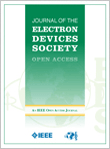
IEEE Journal of the Electron Devices Society
Empowering Innovation in Electron TechnologiesIEEE Journal of the Electron Devices Society is a premier open-access publication dedicated to the advancement of knowledge in the field of electron devices. Published by the IEEE Institute of Electrical and Electronics Engineers Inc, this journal has been contributing essential research to the scientific community since 2013, reflecting its commitment to fostering innovation and development in the industry. With a notable impact factor that places it in reputable category quartiles—Q3 in Biotechnology and Q2 in both Electrical and Electronic Engineering and Electronic, Optical, and Magnetic Materials—this journal stands as a respected outlet for cutting-edge studies. Positioned among the top-ranked journals in its respective categories, including a Scopus rank of #90 in Electronic, Optical and Magnetic Materials, it serves as a vital resource for researchers, professionals, and students alike. The open-access model enhances the journal's accessibility, allowing for widespread dissemination of crucial findings and innovations in electron device technologies. Whether you are engaged in academia or industry, the IEEE Journal of the Electron Devices Society is essential for remaining at the forefront of advancements in this dynamic field.
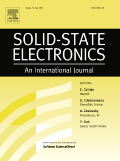
SOLID-STATE ELECTRONICS
Illuminating the Path of Solid-State DiscoveriesSOLID-STATE ELECTRONICS, published by Pergamon-Elsevier Science Ltd, is a highly regarded journal committed to advancing the field of solid-state physics and its applications. With an ISSN of 0038-1101 and an E-ISSN of 1879-2405, this journal has been a cornerstone of scholarly communication since its inception in 1960. Covering a rich spectrum of topics, it features in the Q3 category for Condensed Matter Physics, Electrical and Electronic Engineering, and Materials Science, reflecting its robust engagement in these critical fields. Despite not being an open-access journal, it provides valuable insights and research findings accessible to both academia and industry professionals, ensuring the dissemination of cutting-edge knowledge. With a strong focus on empirical research and theoretical developments, SOLID-STATE ELECTRONICS aims to bridge the gap between fundamental science and practical application, making it an essential resource for researchers, professionals, and students alike in the United Kingdom and beyond.